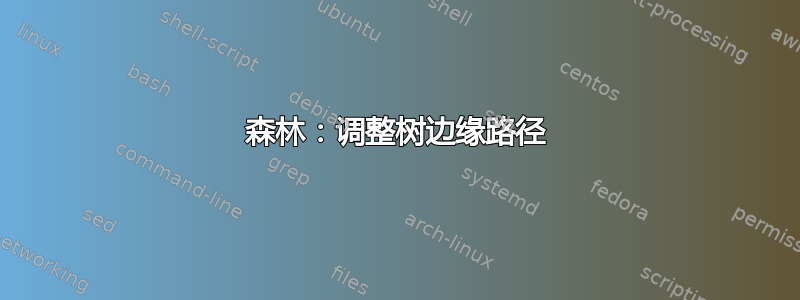
我想画一棵如图所示的树此主题。但是,我的节点中的文本可能很长,导致换行。然后,anchor=150线程中的选项会弄乱grandchildren节点的水平对齐。当我使用时,anchor=west水平对齐很好,但节点向右移动并越过下一列。
我该怎么做才能避免这种情况?
平均能量损失
\documentclass{standalone}
\usepackage{forest}
\usetikzlibrary{arrows.meta}
\usetikzlibrary{calc}
\usetikzlibrary{decorations.markings}
% \usetikzlibrary{fpu}
\usetikzlibrary{intersections}
\usetikzlibrary{trees}
\usetikzlibrary{matrix}
\usetikzlibrary{positioning}
\usetikzlibrary{shadows}
\useforestlibrary{edges}
\tikzset{
parent/.style={align=center,text width=4cm,fill=gray!50,rounded corners=2pt},
child/.style={align=center,text width=2.5cm,fill=gray!20,rounded corners=6pt},
grandchild/.style={fill=white,text width=2.3cm}
}
\begin{document}
\begin{forest}
for tree={%
thick,
drop shadow,
l sep=0.8cm,
s sep=1.0cm,
node options={
draw,
font=\sffamily
},
edge={
semithick,
-Latex
},
where level=0{parent}{},
where level=1{
minimum height=1cm,
child,
parent anchor=south west,
tier=p,
l sep=0.45cm,
for descendants={%
grandchild,
minimum height=0.6cm,
anchor=west,
edge path={
\noexpand\path[\forestoption{edge}]
(!to tier=p.parent anchor) |-(.child anchor)\forestoption{edge label};
},
}
}{},
}
[\large Long text with line break%
[\textbf{Test 1} \\ with a lot of subtext%
[Topic%
[Long topic with line break%
[Topic%
]]]%
]
[\textbf{Test 2} \\ with a lot of subtext%
[Topic%
[Long topic with line break%
[Topic%
]]]%
]
[\textbf{Test 3} \\ with a lot of subtext%
[Topic%
[Long topic with line break%
[Topic%
]]]%
]
[\textbf{Test 4} \\ with a lot of subtext%
[Topic%
[Long topic with line break%
[Topic%
]]]%
]
]
\end{forest}
\end{document}
结果
答案1
您正在加载edges库但实际上并未使用它,这很奇怪,因为这正是它支持的样式。此外,它消除了伪造树结构的需要,使您可以在标记中保留直观的父子关系。
在这种情况下,folder样式是显而易见的选择,至少忽略其误导性的名称。唯一的问题是,当它只应用于特定级别之外时,它不会做正确的事情,而且由于它试图以一种聪明的方式做正确的事情,所以你必须在树的处理后期覆盖它。
例如,
\documentclass[border=10pt]{standalone}
\usepackage[edges]{forest}
\usetikzlibrary{shadows,arrows.meta}
\tikzset{
parent/.style={align=center,text width=4cm,fill=gray!50,rounded corners=2pt},
child/.style={align=center,text width=2.5cm,fill=gray!20,rounded corners=6pt},
grandchild/.style={fill=white,text width=2.3cm}
}
\begin{document}
\begin{forest}
for tree={%
thick,
drop shadow,
node options={
draw,
font=\sffamily
},
edge={
semithick,
-Latex
},
where level=0{
parent,
l sep'=0.8cm,
s sep'=1.0cm,
}{
folder,
grow'=0,
},
where level=1{
minimum height=1cm,
child,
l sep=7.5mm,
for descendants={%
grandchild,
minimum height=0.6cm,
},
for children={
before computing xy={s+=5mm},
}
}{},
}
[\large Long text with line break%
[\textbf{Test 1} \\ with a lot of subtext%
[Topic]
[Long topic with line break]
[Topic]
]
[\textbf{Test 2} \\ with a lot of subtext%
[Topic]
[Long topic with line break]
[Topic]
]
[\textbf{Test 3} \\ with a lot of subtext%
[Topic]
[Long topic with line break]
[Topic]
]
[\textbf{Test 4} \\ with a lot of subtext%
[Topic]
[Long topic with line break]
[Topic]
]
]
\end{forest}
\end{document}



